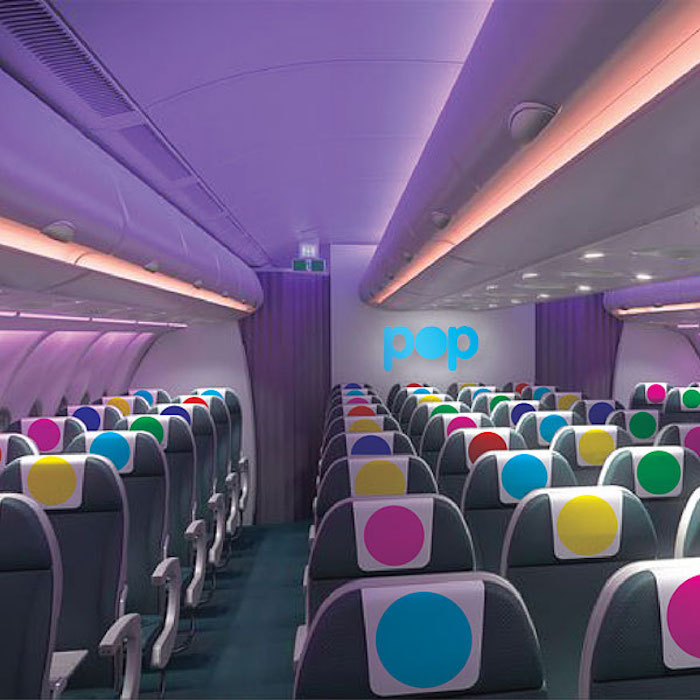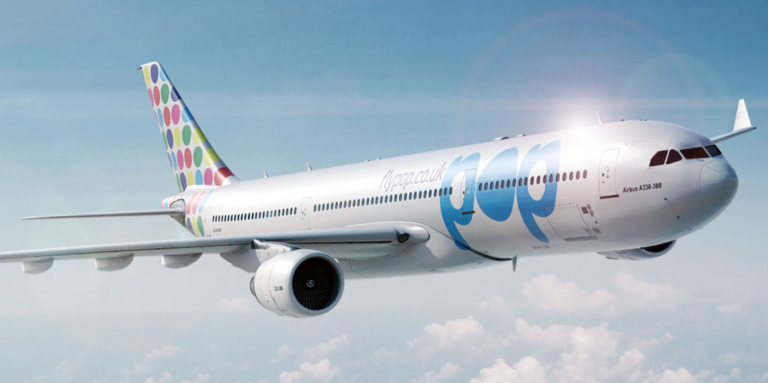The recent collapse of travel company Thomas Cook came as a surprise to most, not least the 150,000 or so tourists who found out while on their holidays. However, those paying attention to the travel industry may not have been quite as shocked.
Thomas Cook, for all its 178-year history, was stuck in the past. It had become a master of package holidays, using its international brand recognition and financial clout to forge partnerships with hundreds of local tour operators, hotels and caterers. Yet, all these supply chain partnerships made things quite rigid, providing little choice or flexibility for travellers.
With the rise of disruptors, like Airbnb, along with low-cost airlines travelling to more destinations than ever, travel customers have more choice and flexibility today than ever before. Unfortunately for Thomas Cook, it had legacy systems to deal with, partnerships to disentangle, and financial models built on current practices.
The airline was stuck between a rock and a hard place. On the one hand, it needed to allow more choice and flexibility; on the other, it had no way of offering that without radically changing its approach. However, radically changing its approach would have been a huge risk and required some funding. Yet, Thomas Cook was already servicing a lot of debt, meaning it was being pushed to make more money rather than take on more debt.
Thomas Cook couldn’t change, but couldn’t stay the same. Ultimately, time caught up with the airline.

Tips to avoid the same mistakes
Could Thomas Cook have been saved? At this point, I think it is unlikely. However, if the company had brought someone on board who really understood the digital revolution, perhaps the company could have shifted its approach earlier and more gradually.
-
Anticipate market changes
The first tip I can give you is to keep an ear to the ground of your industry and to keep your eyes open for changes in the wider market. Recognising potential disruptions and anticipating change is essential for any business to keep up with the market.
Just because an approach isn’t financially successful yet, that doesn’t mean it won’t be. Disruptive businesses have sprung up everywhere since around 2010 ‒ the same time we were all introduced to smartphones and apps. These businesses often start out making a loss only to either a) reach a critical mass or b) find a commercial model that worked. As soon as one of those two things happen, the airline will outperform legacy companies which have failed to adapt.
-
Focus on customer experience (CX)
Thomas Cook pitched itself as “the travel experts” and, in doing so, became the gatekeeper of great travel experiences. A customer wouldn’t need to worry about transfers, hotels, tours or anything else; they could simply book the holiday with Thomas Cook and get all that included. As the strapline said, “don’t just book it, Thomas Cook it!”
This was a great customer experience… in the 1990s. Then the internet came along and travellers could research their destination before they went. They had some idea about what was available, how much it cost, and how long they would want to spend in a location. Suddenly customers became more demanding and needed more flexibility.
Then smartphones and apps came along to upturn the trolley cart once again. With the flick of a thumb, people could access thousands of independent tour operators around the world. They could find a holiday home where they could enjoy all the mod-cons of a typical home. They could even sign up for flight deals to be sent to their phone.
What’s more, small, independent hotels, tour operators, restaurants, and so on, could create and manage their own website and/or app, putting them in direct contact with their customers.
Suddenly, tour operators, like Thomas Cook, were being cut out of the picture. Their main USP ‒ being travel experts ‒ had been blown out of the water and they had nothing to replace it with. Customers were better informed, getting better deals, and enjoying a better customer experience via their phones than by calling or dropping into a high-street tour operator.
Thomas Cook could have focused on providing more destination information on-demand for its customers, or improved its flight check-in process, or even offered customers more flexibility on their tours. Instead, it printed more brochures…
-
Keep costs low and use debt wisely
Debt is, in most cases, a necessary part of running a business. Especially in the beginning. Very few entrepreneurs have millions tucked down the back of the sofa. And it takes that much to buy airplanes, secure routes across the world, get exclusive deals with local tour operators, and so on.
However, every disruptor I’ve mentioned so far started small, proved their model, and then scaled rapidly. Starting small and being targeted allows a new business to tinker with their commercial model to ensure it is profitable, to adapt to market preferences, to fail fast and change strategy. Small means agile.
Once a model is successful on a targeted local scale, companies can look to add new services or destinations, using the same agile approach. Constantly adapting to the market and customer desires to create an experience modelled around the customers, not the pre-existing business plan.
Building up in this way also means you can keep costs low. At flypop, for example, we lease aircraft toward the middle of their service life. Not only does this make things more cost-effective, but it also provides flexibility while removing the liability of a fleet of planes from our balance sheets.
In keeping costs low and scaling sustainably, new businesses can raise as much debt as they need for the next stage of their growth, rather than taking on a massive chunk of debt that will hang over you for decades to come. Servicing a large chunk of debt like that undermines your profitability and will, ultimately, have to be passed on to your customers in one form or another. And, since the budget is such an important part of planning a holiday, keeping costs as low as possible is essential.
To summarise, Thomas Cook failed because it was stuck in an outdated model that both undermined customer experience and was unsuccessful at creating enough profit to service its debt. Thomas Cook missed its “Kodak moment” – or for readers who are not as old as me, it missed its “Netflix moment”.
To avoid Thomas Cook’s mistakes, focus on your customers, listen to what they want, need and desire, and be prepared to change based on shifts in the market. If you are just starting out, focus on a small geographic area and create a business model that is both popular and profitable, keep costs as low as possible, and only take on as much debt as you need at the time.
I believe the failure of Thomas Cook will provide both a warning and an opportunity for new travel companies: put your customer first and build a flexible yet profitable model.
Those who can achieve this will go far, those who don’t will fail.
About the author:
 Nino Judge is founder of UK-based low-cost long-haul airline, flypop. Heis an aeronautical engineer with a passion for consumer needs and is committed to protecting the environment. He believes that companies should shoulder the financial costs of offsetting their carbon emissions produced by running the businesses they operate, as opposed to asking customers to foot the bill at checkout. Therefore, flypop’s intention is to pay to offset its carbon footprint created when flying, whilst also focusing on our everyday operations to ensure no excessive usage of precious resources (e.g. electricity and water usage).Therefore flypop aims to be the first truly carbon neutral international airline. When it begins operations, flypop will offer direct flights from London Stansted Airport to second-tier cities in South Asia, targeting the growing travel requirements of the visiting friends and relatives, tourism and business segments.
Nino Judge is founder of UK-based low-cost long-haul airline, flypop. Heis an aeronautical engineer with a passion for consumer needs and is committed to protecting the environment. He believes that companies should shoulder the financial costs of offsetting their carbon emissions produced by running the businesses they operate, as opposed to asking customers to foot the bill at checkout. Therefore, flypop’s intention is to pay to offset its carbon footprint created when flying, whilst also focusing on our everyday operations to ensure no excessive usage of precious resources (e.g. electricity and water usage).Therefore flypop aims to be the first truly carbon neutral international airline. When it begins operations, flypop will offer direct flights from London Stansted Airport to second-tier cities in South Asia, targeting the growing travel requirements of the visiting friends and relatives, tourism and business segments.
A little backstory:
Frustrated with high costs and long flight times (no direct flights) involved in visiting family in Ludhiana India from the UK, Nino first explored the idea of an airline to serve India with non-stop low-cost flights back in 2003. The air services agreement between the UK and India at the time made it impossible to obtain any flight slots at Heathrow or even to gain permission to fly to India’s second cities.
Fast-forward more than a decade and the changing social, economic and political conditions allowed for the project to be revived. A new air service agreement between the UK and India now allowed a certain number of flights per week to India’s second cities, and India had invested heavily in upgrading the airports of Amritsar and Ahmedabad to international standards. India’s rapidly growing economy had now established India as an economic power on the world stage.
After working closely with Tony Fernandes (Group CEO Air Asia) for five years at the Lotus F1 Team, Nino realised that the Air Asia X low-cost long-haul business model was ideally suited to flights from Europe to South Asia with a maximum flight time of 10 hours. For the nearly three million UK nationals of the Indian diaspora this now provided for the first time an affordable and convenient option for those who wanted to visit friends and relatives.





